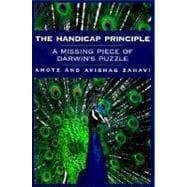
Note: Supplemental materials are not guaranteed with Rental or Used book purchases.
Purchase Benefits
| Acknowledgments | |
| Introduction: The Gazelle, the Wolf, and the Peacock's Tail | |
| Partners in Communication | |
| Prey-Predator Interactions | p. 3 |
| Communication Between Rivals | p. 15 |
| Mate Selection | p. 25 |
| Methods of Communication | |
| The Fallacy of Species-Specific Signals | p. 43 |
| Movements and Ritualization | p. 61 |
| Vocalizations | p. 69 |
| Body Parts that Serve as Signals | p. 81 |
| The Use of Color for Showing Off | p. 93 |
| Chemical Communications | p. 101 |
| The Handicap Principle in Social Systems | |
| Testing the Bond | p. 111 |
| Parents and Offspring | p. 119 |
| Babblers, Competition for Prestige, and the Evolution of Altruism | p. 125 |
| The Social Insects: Why Help the Queen? | p. 151 |
| The Parenting Couple | p. 169 |
| Social Amebas (Cellular Slime Molds) | p. 177 |
| Parasite and Host | p. 185 |
| Information Centers | p. 197 |
| Humans | |
| Humans | p. 209 |
| Epilogue | p. 229 |
| Notes | p. 231 |
| Bibliography | p. 245 |
| List of Figures | p. 261 |
| Index | p. 267 |
| Table of Contents provided by Blackwell. All Rights Reserved. |
The New copy of this book will include any supplemental materials advertised. Please check the title of the book to determine if it should include any access cards, study guides, lab manuals, CDs, etc.
The Used, Rental and eBook copies of this book are not guaranteed to include any supplemental materials. Typically, only the book itself is included. This is true even if the title states it includes any access cards, study guides, lab manuals, CDs, etc.